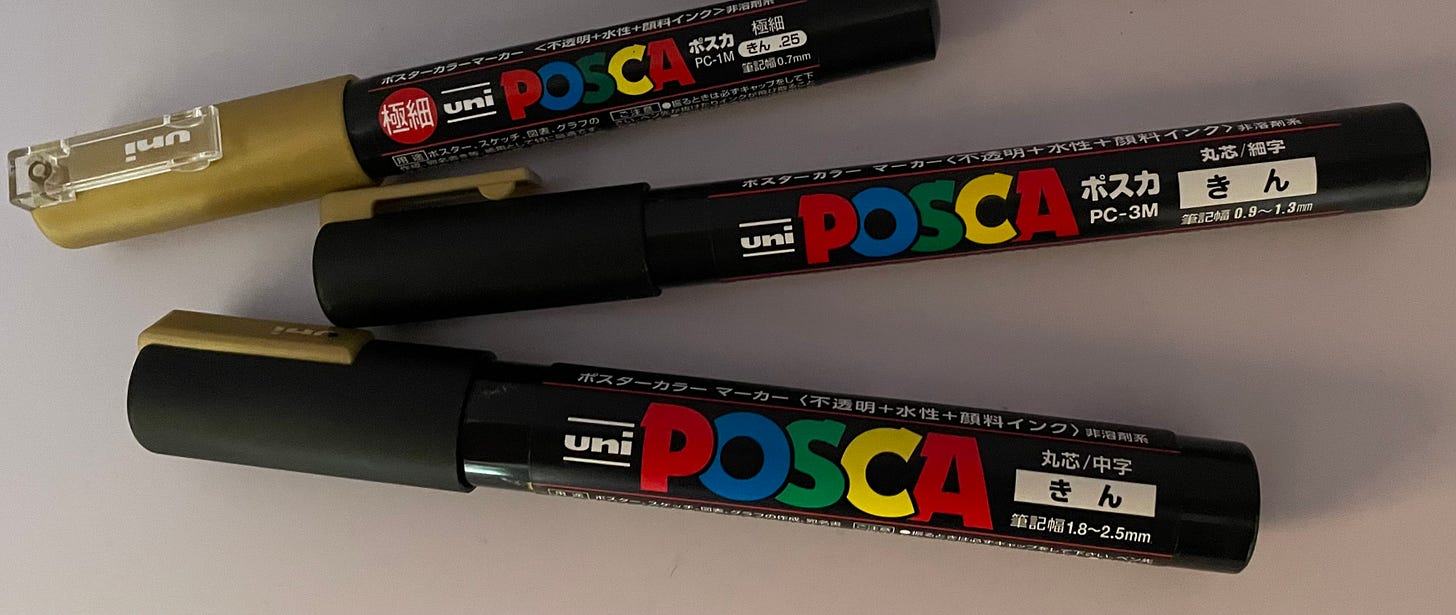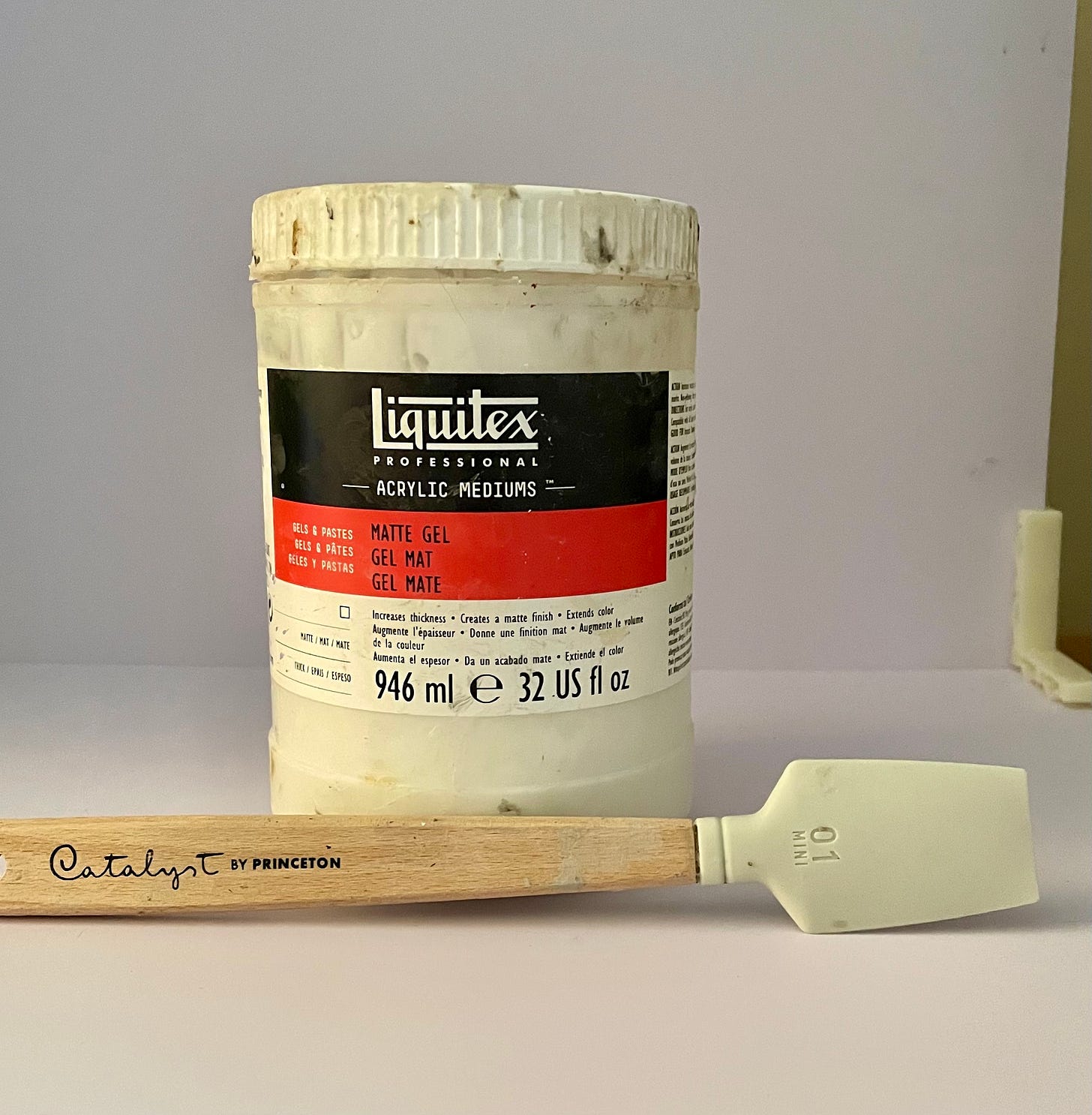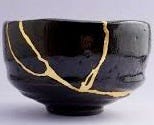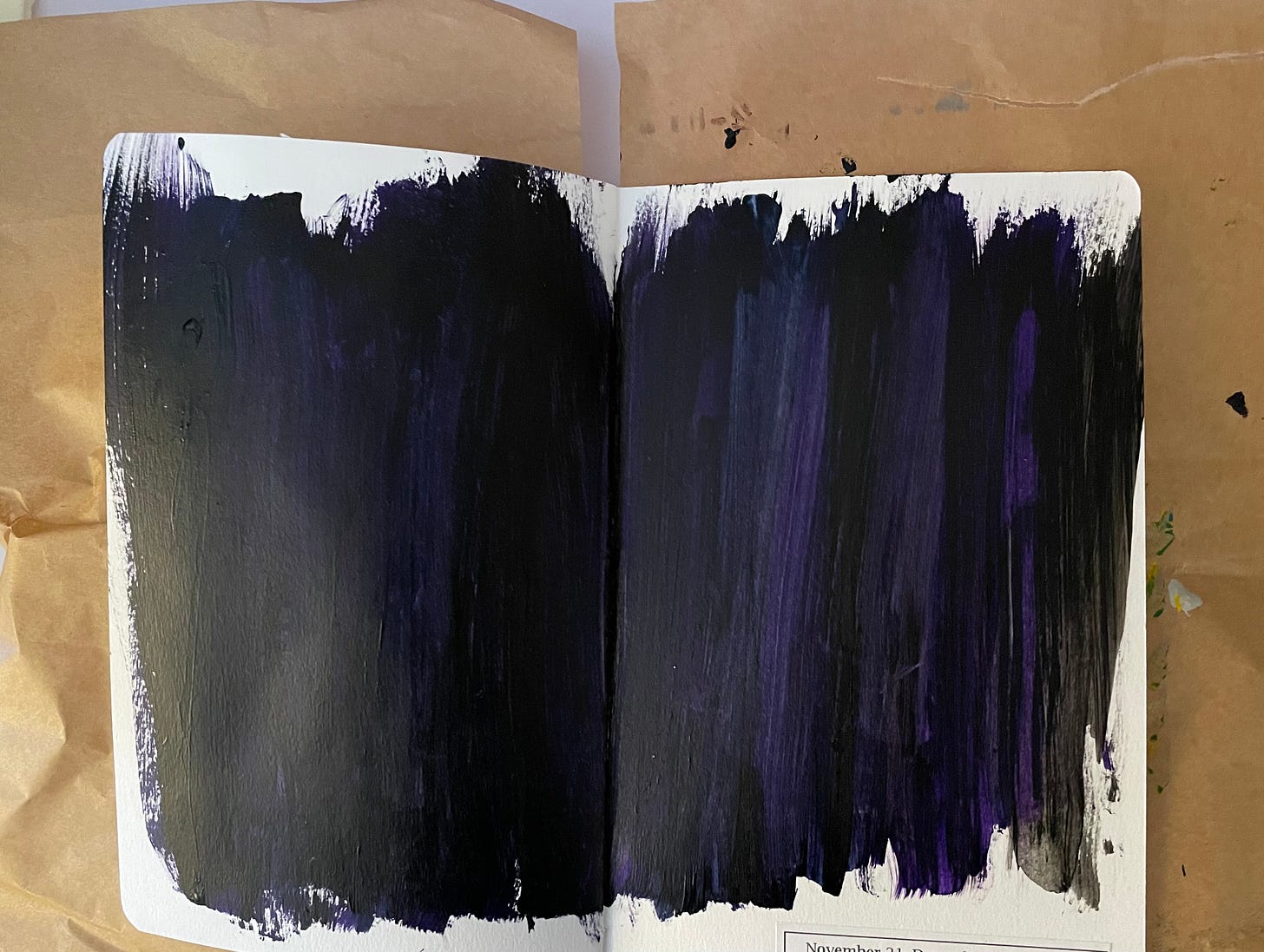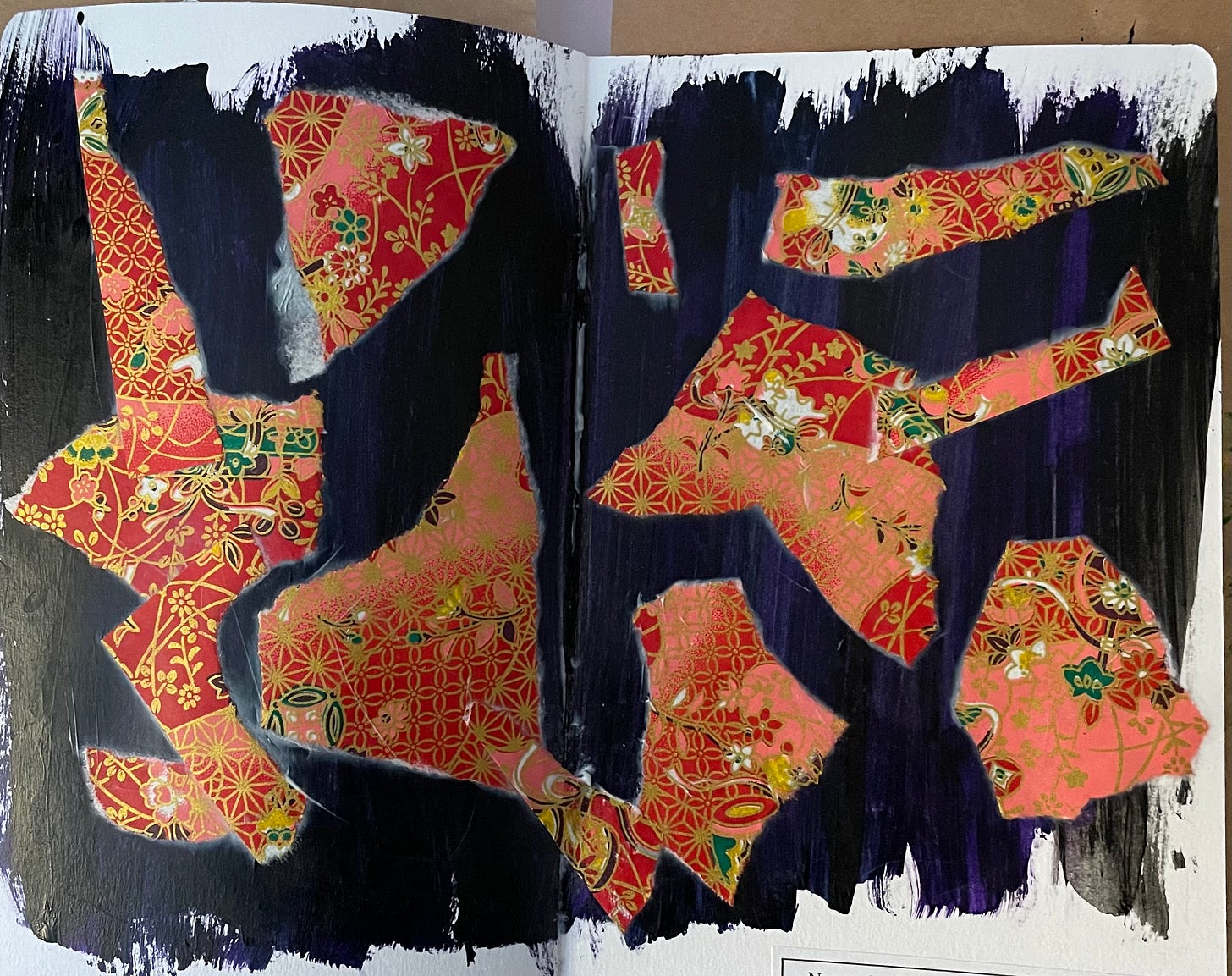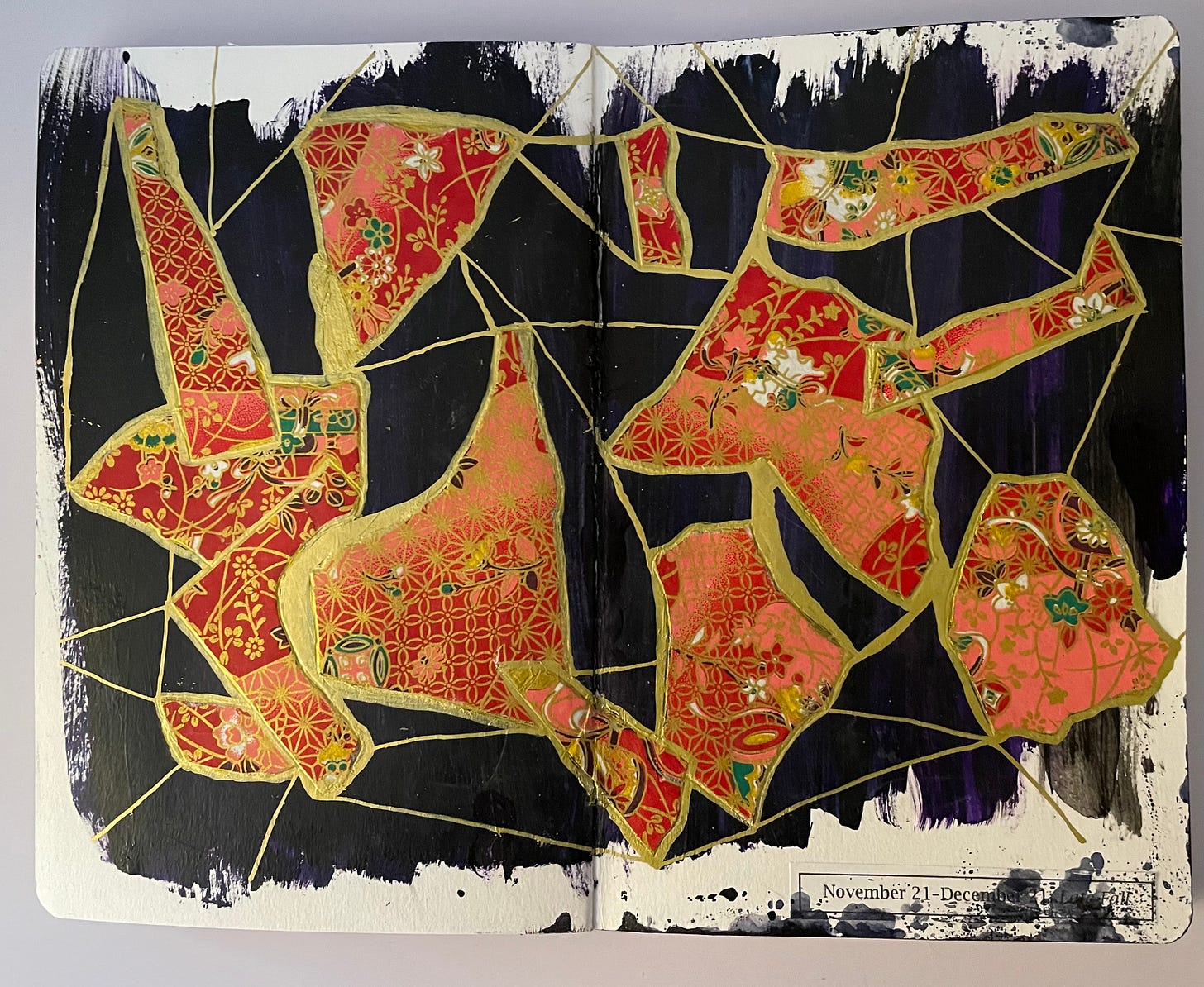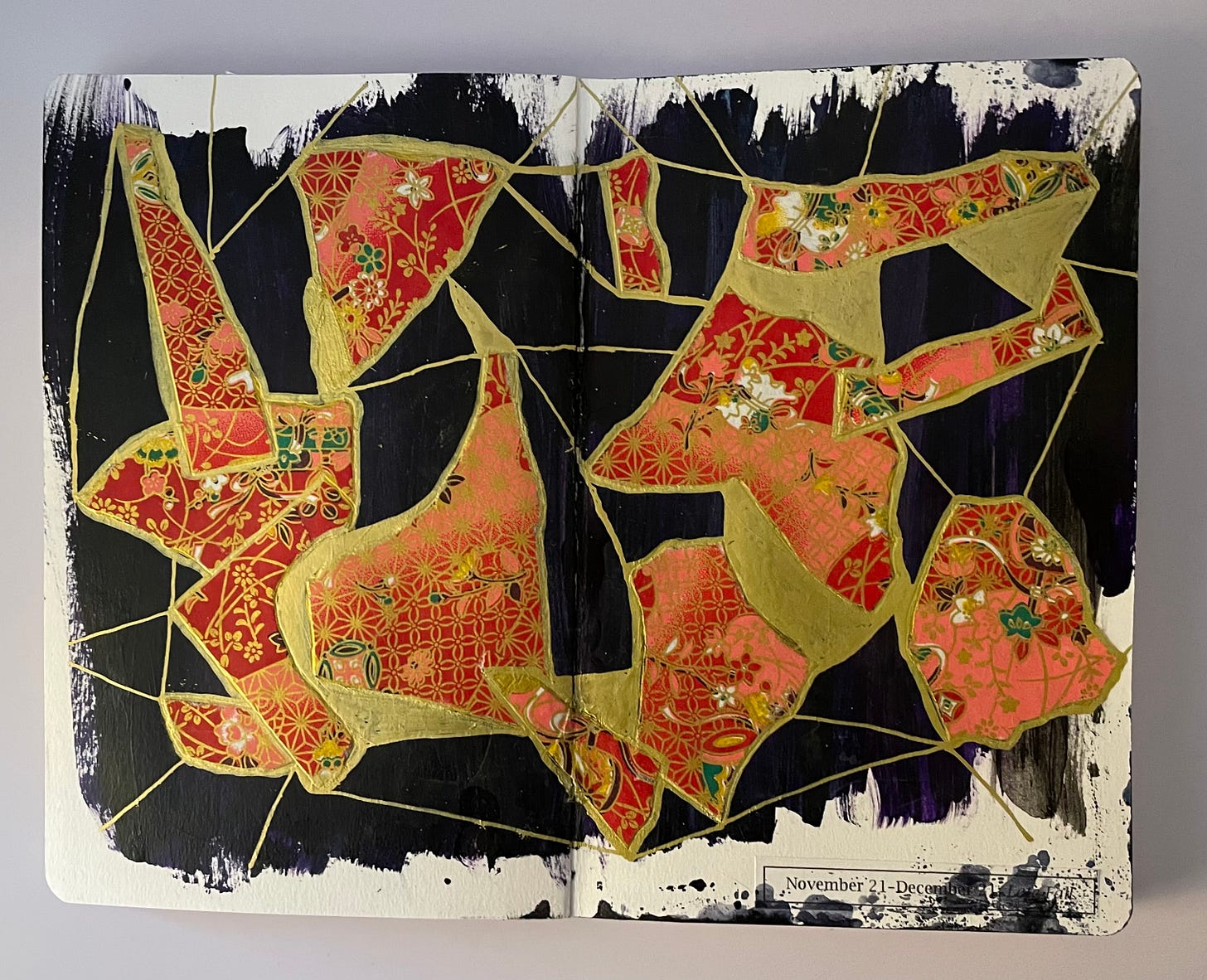Kintsugi Collage
A couple of thoughts before we get started. For this exercise, you’ll need some pretty paper (like wrapping paper), a glue stick (my fav is UHU), and a gold gel pen. For the background, you can paint it, glue down solid-color paper to cover it, or simply leave the background blank.
Option: You can also use some gold paint or a gold Posca paint pen for an additional, final step. These are optional and completely up to you. Posca paint pens are amazing and great fun to use, but there is a little learning curve. Practice with them a bit before using to avoid getting giant paint blobs where you don’t want them. I finished up my piece with a Posca paint pen.
More: Rather than a glue stick, for this exercise I have used matte medium, specifically Liquitex Matte Gel. I put it on my page - or on the back of what I’m gluing down, depending on my mood - with a Princeton Mini Catalyst 01. (You can also use a palette knife, an old credit card, or a thick-bristled brush.) Unless you are using something you’ve printed out on your computer, the great thing about matte medium is you can coat the top of your image with the matte medium as well because the medium is invisible when it dries. Just note that if you put on the top of something you’ve printed out from a computer, the ink will likely run.
Tip: Use some scrap paper to slip behind your journal pages to prevent getting paint or other art supplies on the adjacent pages. I used some scrap Kraft paper, but most anything will work.
Let’s get started. I chose a collage project for us today, done in the style of Japanese Kintsugi. I chose Kintsugi because it’s a process where something that was broken is repaired with gold. The gold makes the piece whole, beautiful, and stronger than before. This is the power of grace in our lives. We are broken, perhaps even to the point of being irredeemable, but grace comes and gives us a new start. Grace lets us go forward with the knowledge of the past, but never the burden of it.
Kintsugi is the Japanese art of repairing broken ceramics with lacquer and gold, leaving a gold seam where the cracks were. Something broken is now beautiful.
Keeping in mind our 30-Minute Art Journal Practice, sit down at your art table with your supplies and center yourself. Think about the times you’ve been given grace, and about those times you’ve offered grace to others.
Remembering to breathe deeply, ask yourself what color grace is. Is it gold? Blue? A fiery orange? (I sometimes think it’s pink, as you might’ve noticed from my sketchbook image in last Sunday’s post!)
If you’re painting your background, paint it the color you think of when you think of grace - but something that will allow your gold pen to show. I used a dark background for demonstration purposes, a mixture of Carbon Black, Dioxazine Purple, and Payne’s Gray.
Tear your pretty paper into pieces, and glue them to your background with a glue stick or matte medium. It’s okay if some of the pieces overlap.
Now trace around each pieces with your gold gel pen. This helps you become familiar with your shapes before you start painting if you plan to do that.
Finally, continuing with your gold gel pen, gold paint, or a gold Posca paint pen, further outline your paper pieces, including placing some larger spots of gold here and there. With your gold, make a web of connection with your pieces.
Getting back to our 30-Minute Art Journal Practice, reflect on the image you’ve created and how it demonstrates the impact grace has had on your life, both in the giving and the receiving. What is your takeaway from this experience? How will it impact your thoughts and actions between now and the time you return to your art journal?
FINAL THOUGHTS
I do not at all understand the mystery of grace - only that it meets us where we are but does not leave us where it found us. Anne Lamott




